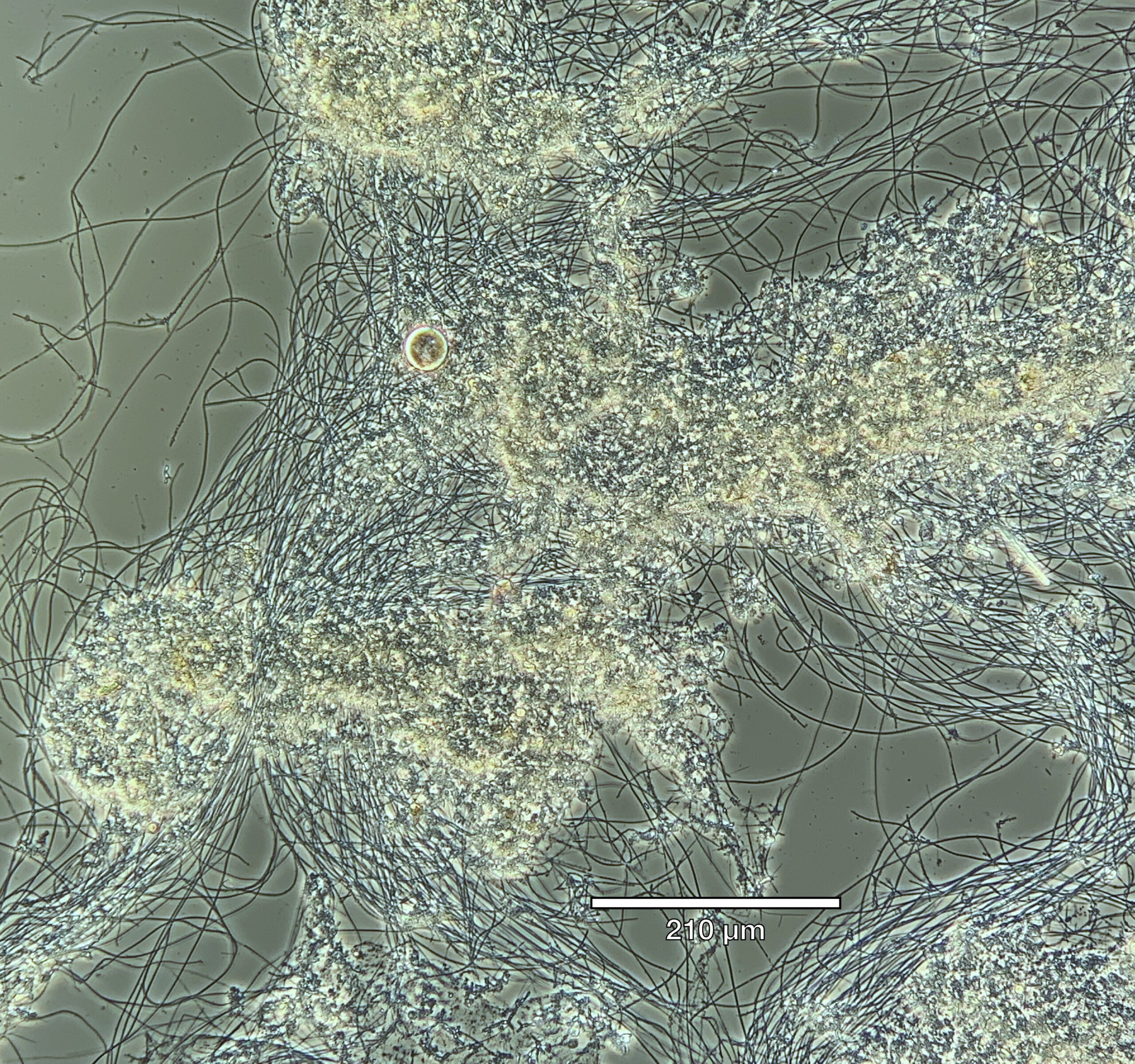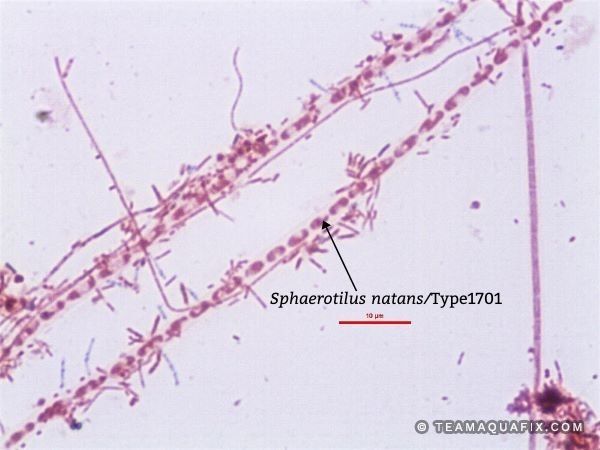Filament Takeover of
Industrial Manufacturer
We were surprised to see the reason behind a plant’s bulking and settling issues
by Saylor Gilbert, Aquafix Research Scientist

Mixed liquor sample from an industrial manufacturer showing Sphaerotilus natans/Type 1701 filaments enveloping and bridging the floc.
In early February of this year, 2023, the Aquafix, inc. lab received a wastewater microscopy sample from an industrial manufacturer. They were experiencing extreme bulking and settling issues. After looking at the mixed liquor samples under the microscope we quickly realized that this client was dealing with the largest outbreak of Sphaerotilus natans/Type 1701 that we had ever seen. The filaments had completely taken over the sample, enveloping and bridging floc.

Under the microscope S. natans/Type 1701 are identified by their sausage shaped cells and incredibly thick sheaths. The sheaths are extremely robust and often persist even after the filament has died. These filaments and/or sheaths cause poor settling/bulking, create a very slimy mixed liquor, and interfere with healthy floc formation.
S. natans/Type 1701 prefers low dissolved oxygen conditions with high flow rates. This makes sewer lines an optimal environment for these filaments. In spring we often see sewer line cleanings leading to S. natans/Type 1701 outbreaks in treatment plants. Even if the cleaning destroys the cells, the sheaths themselves will still wash into systems and cause the problems mentioned earlier.
Treatment for S. natans/Type 1701 can take several potential paths depending on the severity of the issue. Generally, increasing aeration and wasting is a simple approach to handling these filaments at lower abundances. The increased D.O. damages filaments and prevents growth of new filaments, while the increased wasting ensures that the sheaths are removed from the system. Alternatively, we have seen success with using polymers to compact the filaments and sheaths, allowing the system to settle, and making wasting of filaments much easier. In benchtop studies we have found that potassium permanganate, an aggressive oxidizer, can break down the S. natans/Type 1701 sheaths. That being said, it took close to 1000 ppm to see full sheath breakdown and caused other widespread damage to the solids in the sample. With the client mentioned earlier we used a polymer approach combined with extreme wasting and rebuilding of floc with supplementation. As we move into spring it is important to keep a lookout for S. natans/Type 1701 infiltration. These filaments should be dealt with quickly and can lead to extreme upsets if allowed to grow out of control.

About the Author
Saylor Gilbert is a Research Scientist for Aquafix and holds a bachelor’s in microbiology. His expert knowledge of toxicity and F.O.G. allows us to push our products forward and continue to provide our customers with top-tier wastewater solutions.
